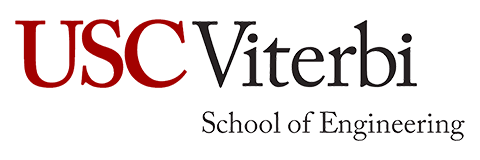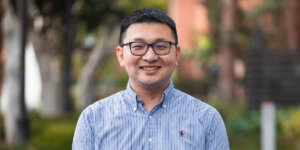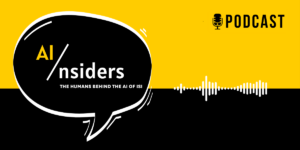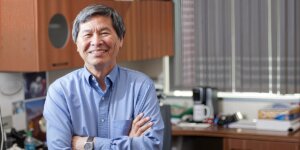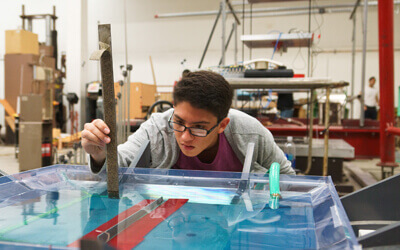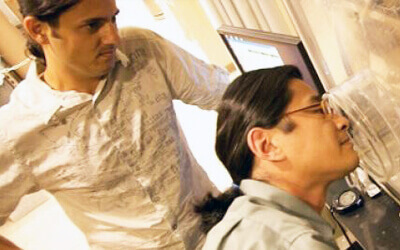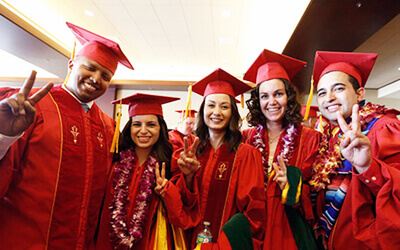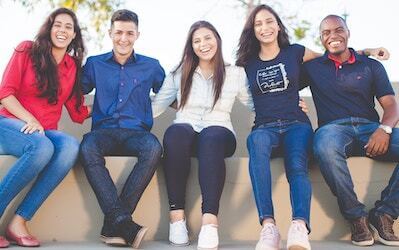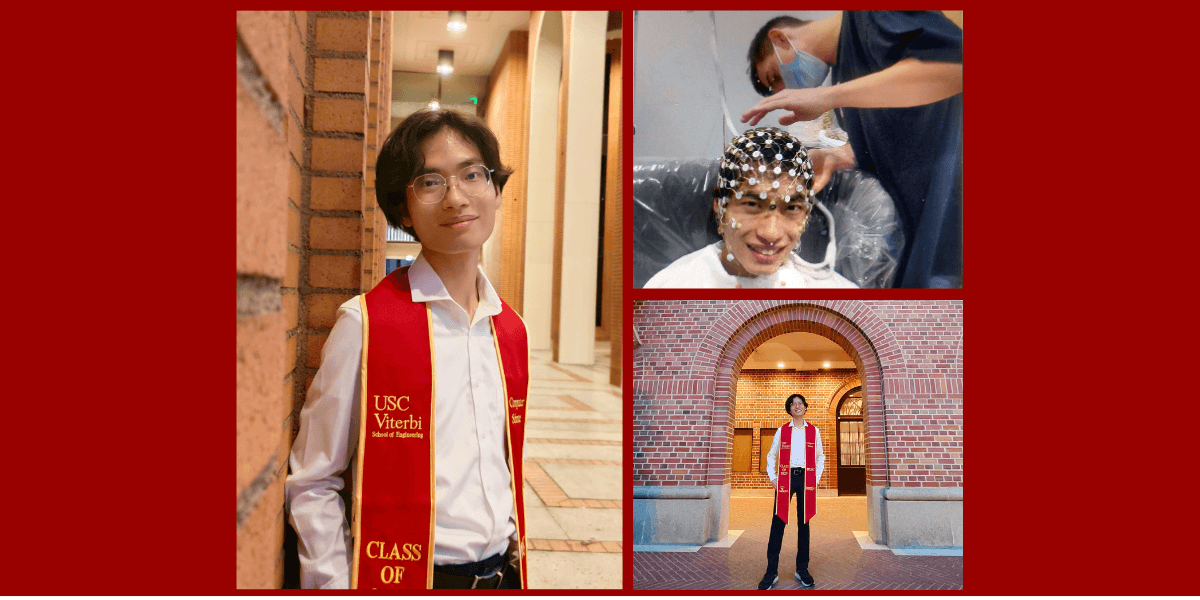
At the Children’s Hospital, Los Angeles, Joey is researching biomarkers for autism in children. Photos/Joey Yap.
This is an as-told-to essay based on a conversation with Jiong Yan (Joey) Yap, HackSC engineering lead and autism research assistant at Children’s Hospital Los Angeles. Joey is graduating with a degree in computer science and will begin a Ph.D. in biomedical engineering at NYU.
Some people get into programming with robotics. Others start by building websites. I began writing code at age 13 by building Minecraft mods — customized, add-on features for the classic game.
Though Minecraft might seem like just a game, building mods meant writing real code. I evidently wasn’t the only person that had this idea — I followed online tutorials and just poked around. I knew from this experience that I liked the exploratory and problem-solving aspects of computer science and engineering, even though my high school didn’t offer programming classes. I felt powerful being able to build anything I could imagine!
I started at USC in 2020, so I spent my entire first year taking classes at midnight on Zoom University from my hometown of Penang, Malaysia. I didn’t even know what the USC campus looked like at that point, and many things were still uncertain, so I took a gap year before I started my sophomore year in person.
The journey to computational neuroscience
After I returned from my gap year, I was looking for research positions when I stumbled upon a posting under Dr. Pat Levitt and Dr. Sahana Nagabhushan Kalburgi at the Children’s Hospital Los Angeles, where I work now. They were looking for people with computer science experience to do signal processing and machine learning on data related to autism.
Coming from Malaysia, I was drawn to their goal of improving access to early diagnosis and intervention for children. In my home country, there’s still some stigma around neurodevelopmental conditions, and I saw this as an opportunity to learn more and contribute to a meaningful area of research.
At the Levitt Lab, we’re looking for “objective” biomarkers of autism in infants, as opposed to the more subjective methods of diagnosis currently used today. Even though the earliest stable diagnosis of autism is usually around 2 years old, the median is around 5 years old. Research has shown that African American and Hispanic children are often underdiagnosed or diagnosed later when it comes to autism and other neurodevelopmental conditions. Similar patterns can be seen in the differences in diagnosis rates between males and females.
“I was drawn to their goal of improving access to early diagnosis and intervention for children.”
Historical observational behavioral testing was based on the male phenotype of autism, and we’re trying to cut across the subjectivity in behavioral testing to hopefully lead us closer to the etiology of the condition.
In our current work, we collect EEG and eye-tracking data to try to find clusters of brain activity that might be able to act as a proxy for brain network activations that were traditionally captured through an fMRI. This is a more inexpensive and feasible method for measuring these biomarkers in pediatrics, so we’re hoping that our research can bring higher accessibility of diagnosis to a broader population at an earlier age.
“I get to talk to parents and see how the work I’m doing is helping real people.”
Even though I love my work now, I didn’t really like biology in high school. It was so much memorization, and I wasn’t really interested in many of the topics we learned about. But computational neuroscience feels different — particularly since a lot of computer science was derived from the brain. Many machine learning models are literally called neural networks.
The more I work in the lab, the more passionate I feel about our goal. Sometimes I’ll be in the lab while a data collection visit is happening, and I’ll watch an infant go through the process. Even in a country as scientifically advanced as America, many people are still not getting the diagnoses they need. I get to talk to parents and see how the work I’m doing is helping real people.
Pursuing research without giving up software engineering
After I started working in the lab, I realized I didn’t have to pick either research or software engineering. I’m writing software that performs signal processing, but I’m also looking into different signal processing methods to see which one will best suit the data.
I also haven’t given up building software. I joined HackSC my sophomore year and worked as the engineering lead on our hackathon management platform, Hibiscus. It’s a solution to streamline our flagship overnight event both behind the scenes and for our hackers.
We had 10 to 12 engineers working on the product and it was cool to see everyone take ownership of a product that we built together from the ground up. After everything comes together, we get to see people use our product to check in, sign up for events, and other fun elements at our hackathon.
Even though my research and HackSC have completely different applications, they’re actually more similar than I initially expected. Both are rewarding in their own ways.
Moving forward
I want to continue doing research, whether it’s improving healthcare access or developing new wearable devices, especially at the level of brain-computer interfaces for populations with preexisting neurological conditions. This field has grown so much in the last 10 to 20 years and how it can be applied practically.
“I want to continue doing research, whether it’s improving healthcare access or developing new wearable devices.”
This fall, I’ll be starting my Ph.D. in biomedical engineering under Dr. Rose Faghih in the Computational Medicine Laboratory at New York University. Their lab works on broader kinds of biosignal data using all sorts of signal processing techniques, so I hope to extend what I already have experience in and expand my repertoire of signal processing algorithms.
I don’t think 13-year-old me could fathom where I am today: building websites, writing ML models, or doing data visualization on the brain. I’m not sure if 23-year-old me can imagine where I’ll be in 10 years, but I know I’ll be working on something I love.
Published on May 14th, 2025
Last updated on June 11th, 2025
